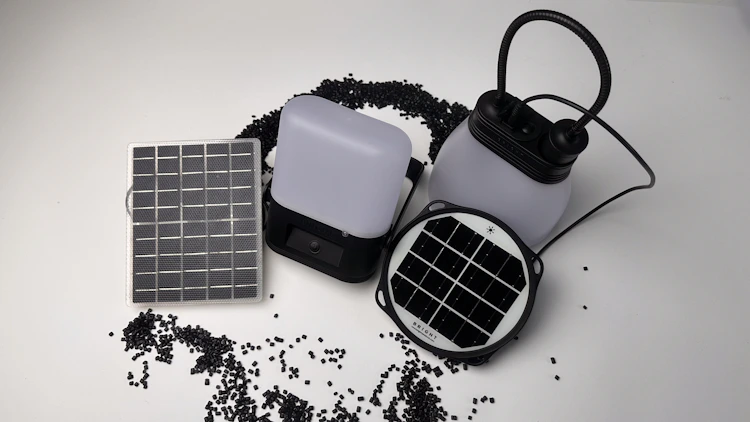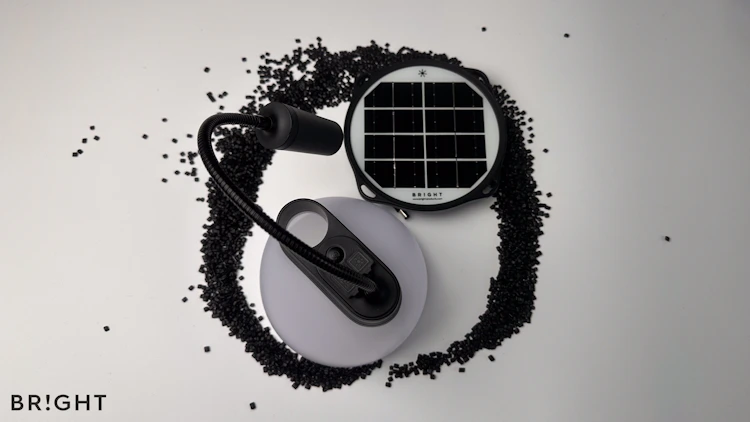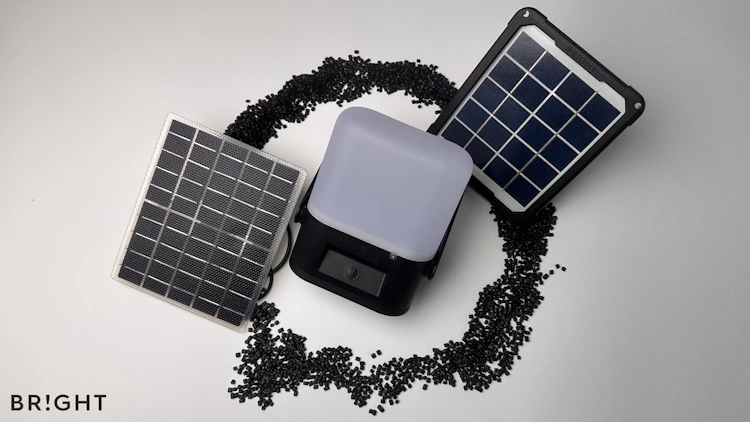
Tackling plastic pollution through circular product design, BRIGHT’s approach
The United Nations Environment Programme (UNEP) estimates that globally more than 400 million tonnes of plastic is produced annually. Half is used once and discarded, with less than 10% recycled. Around 11 million tonnes end up in water bodies annually, imposing a global environmental and social cost of between US$300 billion to US$600 billion.
The scale of the problem has made a circular economy for plastics more urgent. Designing products to be reused and recycled is central to this shift and it is key that all players along the plastics value chain are involved.
Life-cycle thinking is key to reducing plastic pollution
At BRIGHT we believe the main impact our products have on the environment happens before they are even produced. “The design phase is critical, not only for ensuring that products are durable and easy to repair, but also for choosing the right materials. The materials we select influence two key factors: the product’s carbon footprint, and how easily it can be recycled at the end of its life,” explains Sustainability and Partnership manager Lorena Muñoz Carmona.
“This is particularly important in humanitarian and displacement settings, where waste management infrastructure, especially for plastic and electronic waste, is limited or entirely absent,” she adds.
Lorena points out that research shows that only 1% of electronic waste (e-waste) in these contexts reaches a formal recycler. “This underscores the urgent need to rethink how products are designed and managed throughout their lifecycle,” says Lorena.
From using 100% recycled plastic; optimising our designs to use less plastic; designing products to be repairable, to focusing on reliability, here’s how we are playing our part to tackle plastic pollution.
Using 100% post-consumer recycled plastic in casing components

Earlier this year, we upgraded our popular SunBell 2.0Y solar lamp to include casing components made from 100% post-consumer recycled (PCR) plastic. The material is sourced from a Global Recycled Standard-certified supplier.
Some components, such as the lamp shade, still require virgin plastic to ensure performance. But where quality and performance allow, BRIGHT is shifting entirely to recycled alternatives. Our approach avoids mixing virgin and recycled materials, instead opting for full replacement when feasible.
While the use of recycled plastics in pico-solar products is not yet a visible trend, some customers have been continuously requesting suppliers use more recycled materials. Product designer Homero Heredia explains that while customer demand partly prompted the change, it aligns with BRIGHT’s ambition to use the lowest impact materials that deliver high-quality and performance.
“The main challenge to using PCR plastic was previously the lack of a reliable supplier, and how PCR plastic limits colour choices to black,” adds Homero.
Head of R&D and Manufacturing Line Iren Andersen says the company is now assessing where 100% recycled plastic can be used in future product revisions. “We are continuously evaluating where it is relevant and feasible,” she says.
Using more efficient solar panels built with less plastic

This year, BRIGHT also launched a new, lighter and more efficient monocrystalline solar panel using Ethylene Tetrafluoroethylene (ETFE) plastic for the Sol High-Capacity and Sol Mid-Capacity solar lamps.
This material balances flexibility and strength, which reduces the amount of plastic required while improving durability. Unlike traditional solar panels, it needs no protective plastic frame.
Line notes the change reflects a balance of performance, size and need for a lower carbon footprint from packaging.
Optimising design to reduce plastic use
BRIGHT is constantly looking at ways to reduce plastic use in our products. For example, in 2022 our R&D team optimised the mechanical design of the popular SunBell lamp. The upgrade resulted in a 19% reduction in plastic used in the lamp shade. Additionally, we have also cut out plastic use in our packaging.
Designing products to be repairable, supporting repairs

BRIGHT’s product development is guided by the principles of durability, repairability and recyclability, ensuring that sustainability is built into our products. Our solar lamps are designed and built to last as long as possible, this means that a lot of focus is placed on making them repairable.
BRIGHT adheres to the key principles of international frameworks and standards around the repairability of products. For example, our solar lamps are designed to be opened with standard tools.
“We also ensure that components that are prone to wear and require maintenance are easily accessible and can be swapped without having to do special training,” adds Homero.
At BRIGHT we not only ensure our products are repairable, but we also support users with multilingual repair guides for our SunBell, Sol, Start+, and SunTurtle products.
We also ensure we have spare parts available and can deliver them globally on request. In the past we have collaborated with our partners on solar lamp repair schemes in displacement camps in Bidibidi, Uganda and Cox’s Bazar, Bangladesh.
Focusing on recyclability
BRIGHT products are designed to be recyclable at the end of life. We use polypropylene (PP) plastic for most plastic components, a material that is widely recycled.
“If our products are recycled, the plastic can easily be integrated into the existing plastic recycling stream. The key advantages are that PP can be sourced as post-consumer recycling pellets and can be recycled into other PP products. This choice facilitates easier recycling compared to other materials,” explains Homero.
BRIGHT’s design philosophy is increasingly guided by life-cycle assessments, evaluating environmental impact from concept through end-of-life. Repairability, durability and recyclability are now baked into our engineering decisions.
Plastic pollution may seem overwhelming, but by rethinking how products are made and used, we believe solutions are within reach.
Explore how your organisation can be part of the solution, reach out for partnerships.

